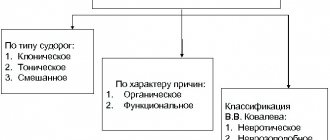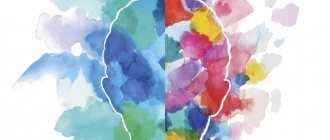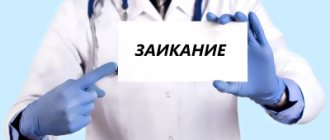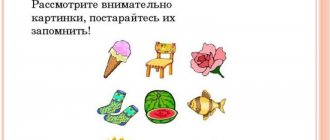How does a person react to a situation when something doesn’t suit him? Here negative emotions become natural and manifest themselves in various actions. A hysterical attack, which manifests itself in screaming and self-torture as symptoms, is one such behavior. The online magazine psytheater.com talks about the need for treatment and first aid for a person who is in this condition.
Negative emotions are the difference between expected and actual. Why do people get offended, aggressive or angry? Because they expected one thing, but got something completely different. Positive emotions are the result of fulfilling all expectations. The man expected, and this is exactly what he got in the end. When the expected does not become reality, then the person has a negative attitude towards what is happening.
Hysterical attack
How does a person react to a situation when something doesn’t suit him? Here negative emotions become natural and manifest themselves in various actions. A hysterical attack, which manifests itself in screaming and self-torture as symptoms, is one such behavior. The online magazine psytheater.com talks about the need for treatment and first aid for a person who is in this condition.
Negative emotions are the difference between expected and actual. Why do people get offended, aggressive or angry? Because they expected one thing, but got something completely different. Positive emotions are the result of fulfilling all expectations. The man expected, and this is exactly what he got in the end. When the expected does not become reality, then the person has a negative attitude towards what is happening.
What does this look like in real life?
A hysterical attack is characterized by a number of different symptoms. We list the main ones:
At the same time, the following manifestations of an attack of hysteria are also observed:
- the quality of vision and hearing deteriorates significantly;
- a person’s field of vision narrows;
- hysterical blindness manifests itself, which affects 1 or both eyes at once;
- deafness (temporary);
- the patient's voice ceases to be clear and sonorous (aphonia);
- muteness appears;
- a person begins to speak in syllables;
- stuttering;
- during an attack, paralysis of individual limbs or the entire body develops ();
- the muscles of the tongue, neck and face become paralyzed;
- bending the body in the opposite direction (in the form of an arc).
A patient who is characterized by frequent hysterical seizures is characterized by the following symptoms:
- refusal to eat;
- inability to swallow food on your own;
- vomiting and nausea (psychogenic origin);
- frequent belching, coughing and yawning.
- presence of flatulence;
- shortness of breath, which in most cases resembles an attack of bronchial asthma.
What is a hysterical attack?
One of the manifestations of negative emotions, when a person does not get what he expected, is a hysterical attack. It is more common in children under 5 years of age, as well as women. Men rarely resort to this method of behavior, since it never helps them achieve what they want. What is a hysterical attack?
This term implies a type of neurosis that manifests itself in indicative emotional states (wringing of hands, arching, laughter, screaming, tears), convulsions and periodic paralysis. In everyday life this is called “throwing a tantrum.” In ancient times, Hippocrates called this condition uterine rabies.
A hysterical attack manifests itself in the form of protest and provocation in order to attract attention and gain benefits. A person usually manifests it at a moment when something does not correspond to his desires, requirements, and ideas.
This behavior is characteristic of people with a special character. Here we should highlight the following characteristics of hysterical people:
- Tendency to fantasize.
- Suggestion and self-hypnosis.
- Tendency to attract attention through extravagant behavior.
- Imbalance in mood and behavior.
- Theatrics in public.
The seizure only occurs when there are spectators. While they look at the person, encourage him, communicate, persuade him to calm down, he continues to fight in hysterics.
It should be understood that hysterical seizures can occur in both adults and patients. 7-9% of people suffer from hysterical seizures. They may be the consequences of severe hysteria - hysterical psychopathy. In this case, we are not talking about a performance, but about real manifestations of the disease. The first signs of this disorder appear in childhood. Therefore, if parents notice a violent reaction in their child, arching, or an annoying cry, then they should contact a pediatric neurologist.
Features of SS in infants
In newborn children, convulsive syndrome can occur due to insufficiently formed areas of the brain, and convulsions can also be triggered by slight hypothermia.
Convulsions appear in newborns in the form of shudders, simultaneous tension in the muscles of the arms, face or lower extremities.
If seizures occur in newborns, the following tests should be performed to make a diagnosis:
biochemical and clinical blood test;
- electrocardiography;
- electroencephalography;
- X-ray of the skull;
- computed tomography;
- examination by a neurologist and ophthalmologist;
- assessment of pregnancy, childbirth and heredity of the child.
This list can be supplemented or changed depending on the individual characteristics and condition of the child. Treatment is prescribed in accordance with the examination results.
Symptoms of a hysterical attack
Symptoms of a hysterical seizure appear in quite a variety of forms, which may resemble epilepsy, withdrawal syndrome or stroke. It is accompanied by general trembling of the body, deafness, blindness and paralysis.
Symptoms of the onset of a hysterical attack include chaotic and sometimes unnatural movements:
To distinguish a hysterical attack from other types of painful conditions, you should know that it is noted:
Various disorders occur in the body. The first is pain in the body and loss of sensation in some parts of it, inability to move them.
- At the speech level, the following disorders occur:
- Stuttering.
- Dumbness.
- Hysterical aphonia - loss of sound in the voice.
- Chanting is communication in syllables.
- The patient enters into written contact.
- At the level of movements, the following disturbances occur:
- Inability to make a movement.
- Paralysis.
- Bending the body into an arc.
- Paralysis of the muscles of the face, tongue, neck.
- Unilateral paresis of the arm.
- Nervous tics of facial muscles.
- Trembling of individual parts or the entire body.
- At the level of internal organs, the following pathologies are noted:
- Psychogenic vomiting.
- Loss of appetite.
- Flatulence.
- Pseudoappendicitis.
- Nausea.
- Yawn.
- Belching.
- Cough.
- Swallowing disorder.
At the moment of a hysterical attack, excessive emotionality, exaggeration of the experience, and a person’s desire to attract the attention of others are noted. His behavior is full of theatricality, demonstrativeness, and immaturity. The man seems to be hysterical with pleasure.
The duration of the attack depends on the amount of time given to the patient. While the audience watches, the performance plays out. Upon completion, the person quickly returns to normal life, which is impossible after an epileptic seizure. The person makes a childish expression on his face and goggles his eyes, pretending that he does not remember anything and does not understand the reactions of others.
A sick person may think that he really suffers from some kind of disease. Hypochondria may develop, causing him to begin regularly visiting various doctors.
How does hysteria manifest itself?
Let us consider various nosological units that have a hysterical symptom complex in the clinical picture.
Histrionic personality disorder begins to manifest itself from a very early age. The main key qualities of personality traits are excessive emotionality, sensitivity, vulnerability, self-centeredness, a tendency to dramatize and a desire to be in the center of everyone's attention. The behavior is demonstrative. Such people do not hide their emotions in the depths, but brightly and theatrically declare their dissatisfaction.
The emotional background is extremely unstable, laughter quickly gives way to tears. With decompensation of a personality disorder, all character traits become more pronounced. A person can get used to various roles and present himself as a significant person, while not representing anything of himself. The inability to be themselves is the scourge of such people. Those around you feel insincerity and falseness in communication. People with a hysterical personality tend to gain new sensations, quickly change types of activities, and do not complete the things they start due to a lack of interest in them.
All thoughts of people with hysteria are about their own pleasure and comfort. They subordinate the people around them to their desires, demanding not only attention, but also the fulfillment of their whims.
This can manifest itself in demonstrative blackmail behavior, scenes of aggression and grief, and demonstrative attempts at suicide. Such unacceptable behavior is difficult for others to tolerate and is emotionally draining and exhausting.
Symptoms of hysteria in women
The female population is several times more likely to develop hysterical neuroses. Moreover, such symptoms are combined with various neurotic disorders: anxiety, fears, compulsions, obsessions, senesthopathy and pathology of emotions. Symptoms of hysteria can masquerade as a variety of physical illnesses.
The manifestation of hysterical attacks begins with persistent demonstrative features, expression, and inadequacy of reaction to what is happening. As it progresses, the symptoms may be supplemented and expanded. Painful manifestations become only a way to manipulate and blackmail others to achieve what they want: attracting attention to one’s person and subordinating loved ones to momentary whims.
Conversion hysterical disorders can look like movement disorders, vegetative crises, and sensory disorders. Thus, these manifestations may mimic some other medical disease. Motor disturbances are possible in a variety of ways - from paralysis and paresis to tics and other involuntary motor acts (blepharospasm, tremor of the head, limbs, etc.).
The difference between this condition and true neurological disorders with organic damage to the nervous system depends on the severity of manifestations on the emotional background. Here we are talking about the so-called hysterical stigmas. They are pretentious, appear unusually, are temporary, and disappear when problems are solved.
Often a small and insignificant reason - a quarrel, rudeness, everyday and family troubles - can cause a hysterical attack: a violent vegetative reaction with convulsions, fainting and loss of consciousness. It is important to distinguish between a severe hysterical attack and manifestations of epilepsy. The main difference is that consciousness does not turn off completely during hysteria; the patient does not injure himself when falling, as happens with epilepsy.
In conversion disorder, a hysterical attack is usually preceded by various neurological equivalents in the form of hyperkinesis and pseudoparalysis. The most common option is gait disturbance, difficulty moving, in the absence of sensitivity disorder and muscle tone of the limbs. Movements in the limbs are not limited and are performed in full.
From a neurological point of view, paralysis in hysterical disorder does not correspond topographically to the projection points of the main nerve trunks and plexuses. A rarer variant of the disease is expressed by aphonia - the inability to speak with an intact vocal apparatus and its innervation. Hysterical contractures are also possible, which disrupt the movements of the joints and spine.
Sensory manifestations during hysteria are expressed by pathology of sensitivity, in the form of reduced, increased sensitivity or complete absence of sensations in the limbs or a certain area of the body. Hysterical pain is also characteristic - unpleasant sensations in organs or parts of the body.
The course of psychogenic hysterical neurotic reactions may differ in different cases. They may be short-lived or appear sporadically against the background of physical health. Transient disorders can disappear spontaneously without treatment, or after resolving a conflicting, traumatic situation. In unfavorable conditions, the patient may become fixated on his unpleasant sensations. In this case, the symptom complex may exist for an indefinite amount of time.
Hysteria in men
For the male contingent, hysterical conversion reactions are more typical as the body’s response to severe stress.
These are acute, transient mental disorders. Hysterical psychoses, as a group of mental disorders, are extremely heterogeneous. They also include twilight stupefactions, pseudodementia, puerilism, stupor, and personality regression. The clinical picture is determined by the severity of the condition and the duration of the pathological reaction. Manifestations can be combined with each other or move from one to another.
As a rule, these disorders occur when a person is imprisoned or under investigation (“prison psychosis”), or in morally difficult situations of loss (loss of close relatives, marital ties). In this way, excessively strong and emotionally significant experiences are repressed from consciousness.
A narrowed state of consciousness (twilight disorder) and shock reactions are often accompanying military operations. With Ganser syndrome (psychogenic twilight), a narrowing of consciousness occurs, orientation in the environment is disturbed, and hallucinations with the theme of a traumatic object occur. When leaving this state, complete amnesia occurs.
Hysterical twilight disorders are demonstrative, there is a rapid change in emotional reactions that are inadequate to what is happening, motor agitation with vivid figurative hallucinations. This condition can last up to several weeks.
Pseudodementia is characterized by sudden apparent memory loss. At the same time, consciousness narrows, the patient cannot answer the simplest questions, and answers inappropriately. So, a person does not know his first and last name, his age, and does not recognize his loved ones. In this state, a person sometimes commits ridiculous actions - he puts his pants on his hands, does not understand how to use simple objects.
Puerilism manifests itself in childish behavior, foolishness, and narrowing of consciousness. A person in this state becomes a small child - he speaks in a child’s voice, moves like a little boy, draws colorful pictures, asks adults to pick him up, etc. The manifestations are very colorful and original, combined with strong emotional experiences.
Personality regression looks like a person’s loss of higher mental functions. A person, one might say, becomes like an animal: he does not speak, eats with his hands, walks on all fours, and is deprived of self-care skills.
Manifestations in children
Such qualities inherent in a hysterical personality as a desire to change activities, emotional lability (quick mood swings from cheerful to tearful), pleasure in play, love and a thirst for attention to oneself are characteristic of children.
These are absolutely normal manifestations, because the mental functions of both children and adolescents are not fully formed. Of course, manifestations in children have nothing in common with adult mental disorders and are considered from the standpoint of behavioral disorders that can be corrected. Also, hysterical fits in children can occur in dysfunctional families due to alcoholism or drug addiction of parents, or undesirable similar behavior of adults.
Even in the preschool period, children with hysterical personality traits are prone to fantasizing, making up stories, and imitation; they attract the attention of adults both with positive traits, such as artistry and emotionality, and with deviant behavior in the form of fights with peers and all kinds of protests.
In adolescence, such young people are not organized, not collected, wasteful and prone to frivolous, sometimes even dangerous, actions. The main goal of this behavior is to stand out from others, to be different from everyone else. Monotonous activities quickly become uninteresting. Basically, they spend their time idle, there are no persistent hobbies or interests. Hysterical psychopaths love adventures, extreme entertainment, and frequent holidays for no reason.
Treatment of a hysterical attack
Since hysterical fits can occur in both adults and children, treatment is necessary. It is carried out by a qualified psychiatrist, who himself prescribes all methods of therapy and medication. Only a healthy person who understands that sometimes he becomes hysterical and begins to demonstratively express his negative emotions can heal on his own.
Let us remember that negative emotions are the difference between how you wanted it to happen and how it actually happened. Positive emotions arise as a result of the coincidence of the desired and the actual. The person planned something and in the end that is exactly what he got, which gave him a feeling of satisfaction. What the person wanted is what he got. But when a person sees that the situation is not unfolding the way he wanted it, negative emotions begin to arise.
Accordingly, in order not to be exhausted by negative emotions and feelings, change your attitude towards what is happening. If you don't like something, understand that your expectations simply weren't met. It happened the way it happened. And you expected something different. But if you accept the fact of how everything happened, then change your attitude towards what is happening. It's not about liking something you don't like. It's about just accepting that bad things happen and your expectations aren't always met. And in order to live calmly, not be nervous and not torment yourself with negative emotions, you need to accept the fact that sometimes events do not unfold the way you would like.
You only need to change your attitude in order to not allow your negative emotions, which express your indignation at the discrepancy between what was expected and what is actually done, to cloud your judgment. You don't have to love troubles, you just have to recognize their right to exist. Now you need to start eliminating these troubles. It would, of course, be good if everything immediately happened exactly the way you want it and imagine it. But the world obeys its own laws, people sometimes make mistakes themselves, don’t notice a lot, and even expect a lot. Therefore, you need to analyze where the mistake was made: in your expectations, actions or misunderstanding of the processes by which the world exists.
Negative emotions are your assistants, which show your attitude towards what is happening. If you are offended and unpleasant, then you need to change the situation. But to do this, you need to not allow your own negative emotions to get the better of you, not to cloud your reason. And here changing your attitude to what is happening will help.
First aid for a hysterical attack
The onset of a hysterical attack is always sudden. One should take into account the fact that a person may not control his behavior and may not be aware of it. This is why you need to be familiar with first aid, which is effective for a hysterical attack.
- Spectators (people around) should be calm and understand that nothing terrible is happening.
- Create a calm environment.
- Move the person to a quiet place.
- Give ammonia a whiff.
- Perform a sudden act that the patient does not expect, for example, hit him on the cheek or slap him on the back, splash water in the face.
- Remove strangers from the premises.
- Stay away from the patient and not pay attention to him.
- Do not stop watching the patient, do not hold his arms, legs, head, shoulders.
- reassurance of others, those present should behave as if nothing terrible had happened;
- transferring the patient to a quieter place;
- removal of strangers from the premises;
- creating a calm environment;
- give the patient ammonia to smell;
- stay at some distance from the patient and not pay much attention to him.
Doctors should be called if the hysteria does not end. At the same time, you yourself should remain calm, be indifferent to all shouts, do not feel sorry for the patient, and do not persuade him to calm down. You should not fall for any kind of blackmail. Otherwise, this will further provoke the behavior of the hysteroid.
It is better to react to the patient as if he is healthy and should be responsible for his actions. Valerian tinctures, sleeping pills, and motherwort are suitable as preventive measures.
Hysterical seizures often occur in childhood or adolescence. They can stop if a person finds himself in a situation where they do not give the desired effect, the individual himself is healthy and even seeks the help of specialists. If situations support hysterical attacks, then they intensify and transform.
Is it possible to give a favorable prognosis for a hysterical attack? It all depends on the basis on which such behavior is formed. If a person remains mentally healthy, then seizures are eliminated by the absence of spectators, indulgence in whims and visits to a psychologist. If you have mental disorders, you cannot do without the help of a specialist.
psytheater.com
A hysterical attack is one of the forms of expression of psychoneurosis by a hysterical personality in situations that do not correspond to its requirements, desires, and ideas. This disorder is attributed to protest and provocation in order to attract attention and obtain personal gain. A hysterical attack often occurs in children and women. The occurrence of such an attack in a man is rather an exception.
This disorder is classified as a syndrome of hysteria, which can manifest itself in a wide variety of forms and resemble an epileptic seizure, stroke, and withdrawal syndrome.
Symptoms of the disease are accompanied by general trembling of the body, the onset of blindness, paralysis, and deafness, according to the patient.
Signs of a hysterical attack include complex, erratic movements, during which the sick person throws up their arms and legs, twists their elbows, tears their hair, clenches and grinds their teeth. Often people, leaning on the back of their heads and on their heels, bend unnaturally into an arc during an attack. Patients may cry, scream, repeat the same words.
During an attack, speech disorders and coordination problems are noted. Hiccups, vomiting, frequent urination, esophageal spasms, belching, and rapid heartbeat may occur.
During a disorder, the patient often falls, creating the impression of suddenness, but upon closer examination it becomes obvious that the fall is made in such a way as not to injure himself: carefully and slowly. Then convulsive movements of the limbs are observed, which are characterized by a chaotic character and theatrical expressiveness. At the same time, the patient retains consciousness. There is no discharge from the mouth, the tongue is never bitten, breathing is even, no excessive sweating is noted, and a reaction to light is recorded. As a rule, there is no involuntary urination or defecation. The patient does not fall asleep after an attack and remembers everything.
The duration of a hysterical attack depends on the amount of attention paid to the patient. After the cessation of the disorder, a person can calmly continue his activities, which is impossible after an epileptic attack. Some patients, after the end of the attack, refer to unconsciousness and, during the development of a hysterical stupor, deliberately give their face a childish expression or stare their eyes.
After the final completion of this condition, patients experience the following disorders: contraction of the facial muscles (tic), tremor of the whole body. During sleep, all symptoms disappear.
Often, when this condition develops, people convince themselves that they are sick with some disease. This provokes the development of hypochondria, and patients turn to doctors with their far-fetched problem.
In addition, the patient, while in a state of attack, is able to perform the most unexpected actions, for example, quickly walk or run somewhere.
This state is preceded by an unpleasant, violent experience that develops during the daytime. This disorder is characterized by an indefinitely long course. An attack often causes confusion and panic among others, especially if it occurs for the first time. Therefore, if a disorder occurs, it is necessary to provide proper first aid, since prolonged nervous overstrain can lead to a heart attack or stroke (cerebrovascular accident). It is important to differentiate a hysterical seizure from an epileptic seizure, since these two conditions require different first aid measures.
First aid for a hysterical attack includes:
During a hysterical attack, it is not recommended to leave the sick person unattended, to hold him by the shoulders, arms, or head.
psychomed.com
Further assistance in a medical facility
Relieving a person of a convulsive syndrome is possible only after the cause of its occurrence has been established and measures have been taken to eliminate it.
Measures to relieve the patient from seizures are carried out in the following areas:
- prevention of seizures and anticonvulsant therapy (taking sedatives);
- restoration and maintenance of normal functioning of the respiratory and circulatory systems;
- administration of drugs intravenously (in the presence of severe seizures);
- normalization of nutrition to restore body functions.
Anticonvulsant therapy is carried out using:
- Diazepam;
- Lorazepam;
- Phenytoin.
In cases where treatment with the listed drugs does not produce an effect, Phenobarbital is prescribed, which has a strong effect on the process of neuronal excitability.
Neurologists do not prescribe long-term therapy after the first seizure, since seizures caused by conditions such as fever, acute infection, poisoning or metabolic disorders are relieved by treatment of the underlying disease.
News of psychiatry and psychology
Life in the rhythm of the big city does not stop for a minute. Numerous problems, conflicts and experiences often lead to stress. Which, in turn, can cause a condition called a hysterical fit. It usually affects people with an unstable nervous system. In terms of external manifestations, a hysterical seizure resembles an epileptic one, but has a number of significant differences.
First of all, a hysterical attack is a defensive reaction to any stressful situation.
The victim is conscious and the pupils react to light. The fall occurs consciously, convulsions may be observed, there is no foaming, tongue biting and involuntary urination do not occur, loss of oral speech and paralysis are possible. In such a situation, it is necessary to provide high-quality first aid, since prolonged nervous stress can lead to a heart attack or stroke. After providing first aid, you should immediately call an ambulance, and then go for treatment to a psychotherapist.
First aid actions should be as follows:
1. Take the victim away from people. Attention provokes hysteria. 2. Bring the victim back to normal condition. To do this, you can splash water on his face, prick him with a needle, or hit him on the cheek. 3. Revive the victim by inhaling ammonia. 4. Take the victim to fresh air or open a window. 5. Stay away from the victim so as not to provoke a second seizure. 6. Give the victim a warm drink.
Attention should be paid to the fact that hysteria requires an audience. The more interest people around you have in what is happening, the longer the hysterical attack will be. It is important not to comply with the victim’s requests, to act distantly, but at the same time be close to him. If you act quickly and correctly, a hysterical attack will last no more than 5-10 minutes. In some situations, the victim needs medical attention.
www.saphris.ru
First aid
If a convulsive syndrome occurs, any person can provide emergency assistance to the patient. First aid before doctors arrive is of great importance in this condition, and its absence can be fatal.
The patient should be provided with fresh air. If a seizure occurs indoors, you must immediately open the windows and then remove the victim’s tight clothing.
To prevent the patient from biting his tongue and breaking his teeth, a handkerchief rolled into a rope is placed in his mouth. To prevent possible suffocation, the patient's head or the whole body is turned on its side so that if vomiting occurs, the masses can come out without hindrance.
Important! During a seizure, remove objects from the patient that could cause injury to himself, and it is better to put a pillow or something soft under his head.
If a child has a seizure against the background of crying and hysterics, and during the seizure the complexion changes, cardiac activity is disrupted, and the patient loses consciousness, the main thing is to prevent breathing problems.
To do this, sprinkle your face with water, apply ammonia, and press down the root of your tongue with the handle of a clean spoon wrapped in cloth.
EPILEPTIC AND HYSTERICAL SEIZURES.
Epileptic seizure.
An epileptic seizure is one of the forms of manifestation of a severe mental illness - epilepsy . A seizure is a sudden loss of consciousness, accompanied first by tonic and then clonic convulsions with a sharp turn of the head to the side and the release of foamy fluid from the mouth. In the first seconds after the onset of the attack, the patient falls, often receiving injuries. There is a pronounced cyanosis of the face, the pupils do not react to light.
The duration of the attack is 1-3 minutes. After the seizures stop, the patient falls asleep and does not remember what happened to him. Involuntary urination and bowel movements often occur during a seizure.
First aid.
During the entire attack, the patient needs help.
An epileptic seizure and loss of consciousness during a stroke must be distinguished from a hysterical seizure. (see epilepsy).
Diagnostic approach
For convulsive syndrome, CT and MRI of the brain are mandatory tests. In addition, the following research methods are used:
- EEG (electroencephalography);
- radioisotope scanning;
- radiography of the skull;
- cerebral angiography;
- examination of cerebrospinal fluid (if meningitis and encephalitis are suspected);
- blood test (to detect intoxication).
In the diagnostic process, factors such as a person’s age, past illnesses, the presence of epilepsy and convulsive syndrome in the patient’s immediate family, previous head injuries or infectious diseases, the presence of congenital anomalies and tumors are taken into account.
Hysterical attack.
A hysterical attack usually develops during the daytime, and is preceded by a violent, unpleasant experience for the patient. A patient with hysteria usually falls gradually in a convenient place, without hurting himself; the observed convulsions are chaotic and theatrically expressive. There is no foamy discharge from the mouth, consciousness is preserved, breathing is not impaired, the pupils react to light. The seizure continues indefinitely and the longer the more attention is paid to the patient. Involuntary urination, as a rule, does not occur. After the cessation of convulsions, there is no sleep or stupor, the patient can calmly continue his activities.
First aid.
During a hysterical attack, the patient also needs help.
- It should not be held;
- It is necessary to move it to a quiet place and remove strangers,
- Give the ammonia a whiff and do not cause any disturbance. Under such conditions, the patient quickly calms down and the attack passes. (see hysterical neurosis).
www.medglav.com











